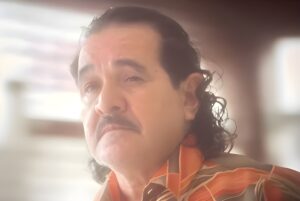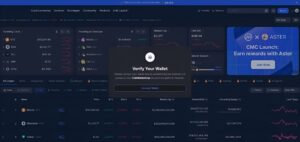The world of drug trafficking is complex and often dangerous, with various organizations vying for control over lucrative markets. Among these, several cartels have emerged as particularly powerful players. This article explores five of the most powerful drug cartels, their operations, and their impact on global drug trafficking.
The Most Powerful Drug Cartels in the World
#1
Key Facts:
Founded: Late 1980s
Headquarters: Sinaloa, Mexico
Notable Leader: Joaquín "El Chapo" Guzmán (captured in 2016, sentenced in 2019)
Operations:
The Sinaloa Cartel has established a vast network of drug trafficking routes into the United States and other countries. It is known for its sophisticated logistics and ability to adapt to law enforcement efforts. The cartel's influence extends beyond drug trafficking to include money laundering, extortion, and corruption.
Impact:
Despite the arrest of its leader, the Sinaloa Cartel continues to thrive, maintaining significant control over the drug trade. Its ability to operate under intense scrutiny has made it a formidable force in the criminal underworld.
Sinaloa Cartel
Overview: The Sinaloa Cartel is often regarded as the most powerful drug trafficking organization in the world. Founded in the late 1980s, it has a long history of dominance in the drug trade, particularly in the trafficking of cocaine, heroin, and marijuana.Key Facts:
Founded: Late 1980s
Headquarters: Sinaloa, Mexico
Notable Leader: Joaquín "El Chapo" Guzmán (captured in 2016, sentenced in 2019)
Operations:
The Sinaloa Cartel has established a vast network of drug trafficking routes into the United States and other countries. It is known for its sophisticated logistics and ability to adapt to law enforcement efforts. The cartel's influence extends beyond drug trafficking to include money laundering, extortion, and corruption.
Impact:
Despite the arrest of its leader, the Sinaloa Cartel continues to thrive, maintaining significant control over the drug trade. Its ability to operate under intense scrutiny has made it a formidable force in the criminal underworld.
#2
Key Facts:
Founded: 2010
Headquarters: Jalisco, Mexico
Notable Leaders: Nemesio Oseguera Cervantes (alias "El Mencho")
Operations:
The CJNG is involved in the production and distribution of various drugs, including methamphetamine and fentanyl. The cartel has expanded its reach into several Mexican states and has established connections with international drug trafficking organizations.
Impact:
The CJNG is notorious for its brutal violence, including public displays of power and intimidation. Its aggressive tactics have led to significant territorial disputes with other cartels, contributing to rising violence in Mexico.
Jalisco New Generation Cartel (CJNG)
Overview: Emerging in the early 2010s, the Jalisco New Generation Cartel (CJNG) has quickly risen to prominence, often seen as the primary rival to the Sinaloa Cartel. Known for its violent tactics and rapid expansion, the CJNG has become a major player in the drug trade.Key Facts:
Founded: 2010
Headquarters: Jalisco, Mexico
Notable Leaders: Nemesio Oseguera Cervantes (alias "El Mencho")
Operations:
The CJNG is involved in the production and distribution of various drugs, including methamphetamine and fentanyl. The cartel has expanded its reach into several Mexican states and has established connections with international drug trafficking organizations.
Impact:
The CJNG is notorious for its brutal violence, including public displays of power and intimidation. Its aggressive tactics have led to significant territorial disputes with other cartels, contributing to rising violence in Mexico.
#3
Key Facts:
Founded: 1930s
Headquarters: Matamoros, Tamaulipas, Mexico
Notable Leaders: Osiel Cárdenas Guillén (arrested in 2003)
Operations:
Historically, the Gulf Cartel has been involved in the trafficking of cocaine, marijuana, and methamphetamine. The cartel has a well-established distribution network and has been known to engage in violent confrontations with rival organizations.
Impact:
The Gulf Cartel has experienced internal divisions and leadership struggles, which have weakened its position. However, it still plays a crucial role in the drug trade, particularly in northeastern Mexico and along the U.S. border.
Cartel del Golfo
Overview: The Gulf Cartel is one of the oldest drug trafficking organizations in Mexico, with roots dating back to the 1930s. Although it has faced numerous challenges over the years, it remains a significant player in the drug trade.Key Facts:
Founded: 1930s
Headquarters: Matamoros, Tamaulipas, Mexico
Notable Leaders: Osiel Cárdenas Guillén (arrested in 2003)
Operations:
Historically, the Gulf Cartel has been involved in the trafficking of cocaine, marijuana, and methamphetamine. The cartel has a well-established distribution network and has been known to engage in violent confrontations with rival organizations.
Impact:
The Gulf Cartel has experienced internal divisions and leadership struggles, which have weakened its position. However, it still plays a crucial role in the drug trade, particularly in northeastern Mexico and along the U.S. border.
#4
Key Facts:
Founded: Late 1990s
Headquarters: Nuevo Laredo, Tamaulipas, Mexico
Notable Leaders: Heriberto Lazcano (killed in 2012)
Operations:
Los Zetas engage in a wide range of criminal activities, including drug trafficking, human trafficking, extortion, and organized crime. They are particularly known for their brutal methods, which include torture and public executions.
Impact:
The cartel's violent reputation has instilled fear in both rivals and local populations. While Los Zetas have faced significant losses in leadership and territory, they continue to operate and pose a threat to law enforcement and rival cartels.
Los Zetas
Overview: Originally formed as the enforcement arm of the Gulf Cartel, Los Zetas became one of the most feared and violent cartels in Mexico. Comprised of former military personnel, they are known for their military-style tactics and extreme violence.Key Facts:
Founded: Late 1990s
Headquarters: Nuevo Laredo, Tamaulipas, Mexico
Notable Leaders: Heriberto Lazcano (killed in 2012)
Operations:
Los Zetas engage in a wide range of criminal activities, including drug trafficking, human trafficking, extortion, and organized crime. They are particularly known for their brutal methods, which include torture and public executions.
Impact:
The cartel's violent reputation has instilled fear in both rivals and local populations. While Los Zetas have faced significant losses in leadership and territory, they continue to operate and pose a threat to law enforcement and rival cartels.
#5
Key Facts:
Founded: 1970s
Headquarters: Medellín, Colombia
Notable Leader: Pablo Escobar (killed in 1993)
Operations:
At its height, the Medellín Cartel controlled a significant portion of the cocaine trade into the United States. The cartel was known for its innovative smuggling techniques and extensive distribution networks.
Impact:
The Medellín Cartel's violent tactics and influence over Colombian politics left a lasting legacy. Although it no longer exists, its impact on the drug trade and law enforcement strategies continues to be felt today.
Medellín Cartel
Overview: Although it disbanded in the early 1990s, the Medellín Cartel remains one of the most infamous drug trafficking organizations in history. Led by Pablo Escobar, the cartel was instrumental in the cocaine trade during its peak.Key Facts:
Founded: 1970s
Headquarters: Medellín, Colombia
Notable Leader: Pablo Escobar (killed in 1993)
Operations:
At its height, the Medellín Cartel controlled a significant portion of the cocaine trade into the United States. The cartel was known for its innovative smuggling techniques and extensive distribution networks.
Impact:
The Medellín Cartel's violent tactics and influence over Colombian politics left a lasting legacy. Although it no longer exists, its impact on the drug trade and law enforcement strategies continues to be felt today.
#6
Conclusion
The landscape of drug trafficking is ever-evolving, with powerful cartels continuously vying for control and influence. The Sinaloa Cartel and the Jalisco New Generation Cartel are currently at the forefront, while historical organizations like the Medellín Cartel have left an indelible mark on the industry. Understanding these cartels is crucial for comprehending the complexities of global drug trafficking and the ongoing challenges faced by law enforcement agencies worldwide.Reactions
Reactions
1







